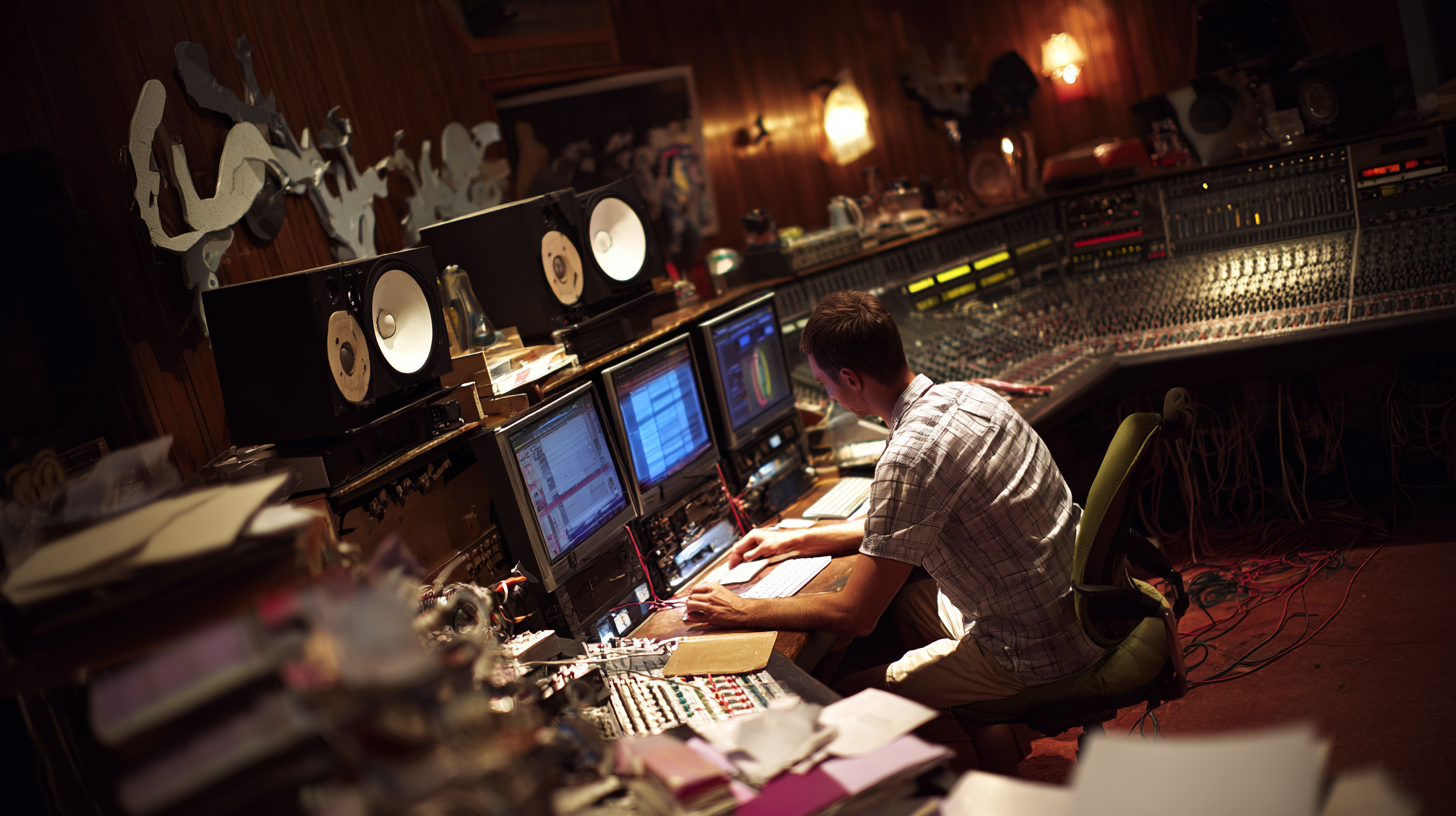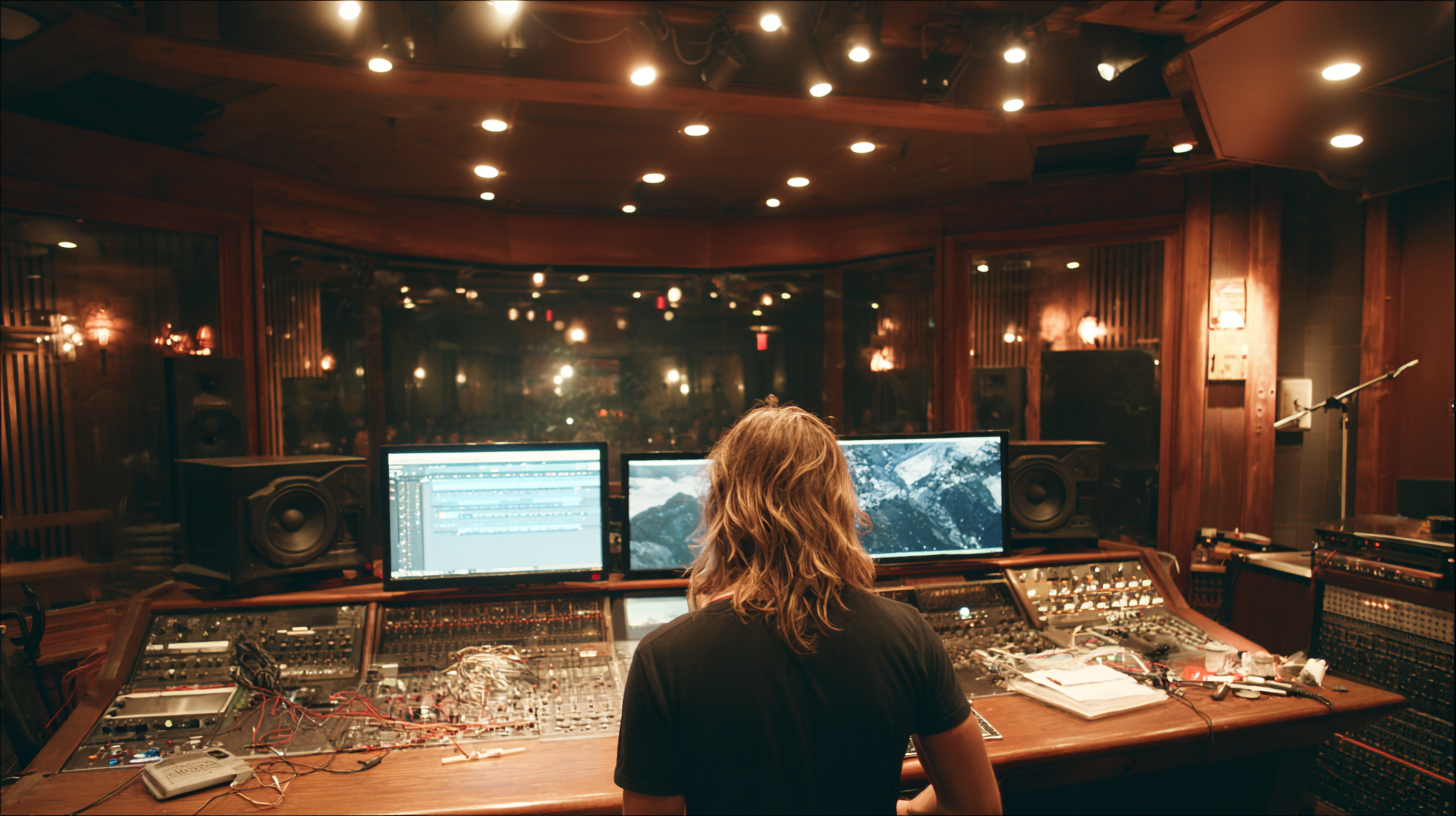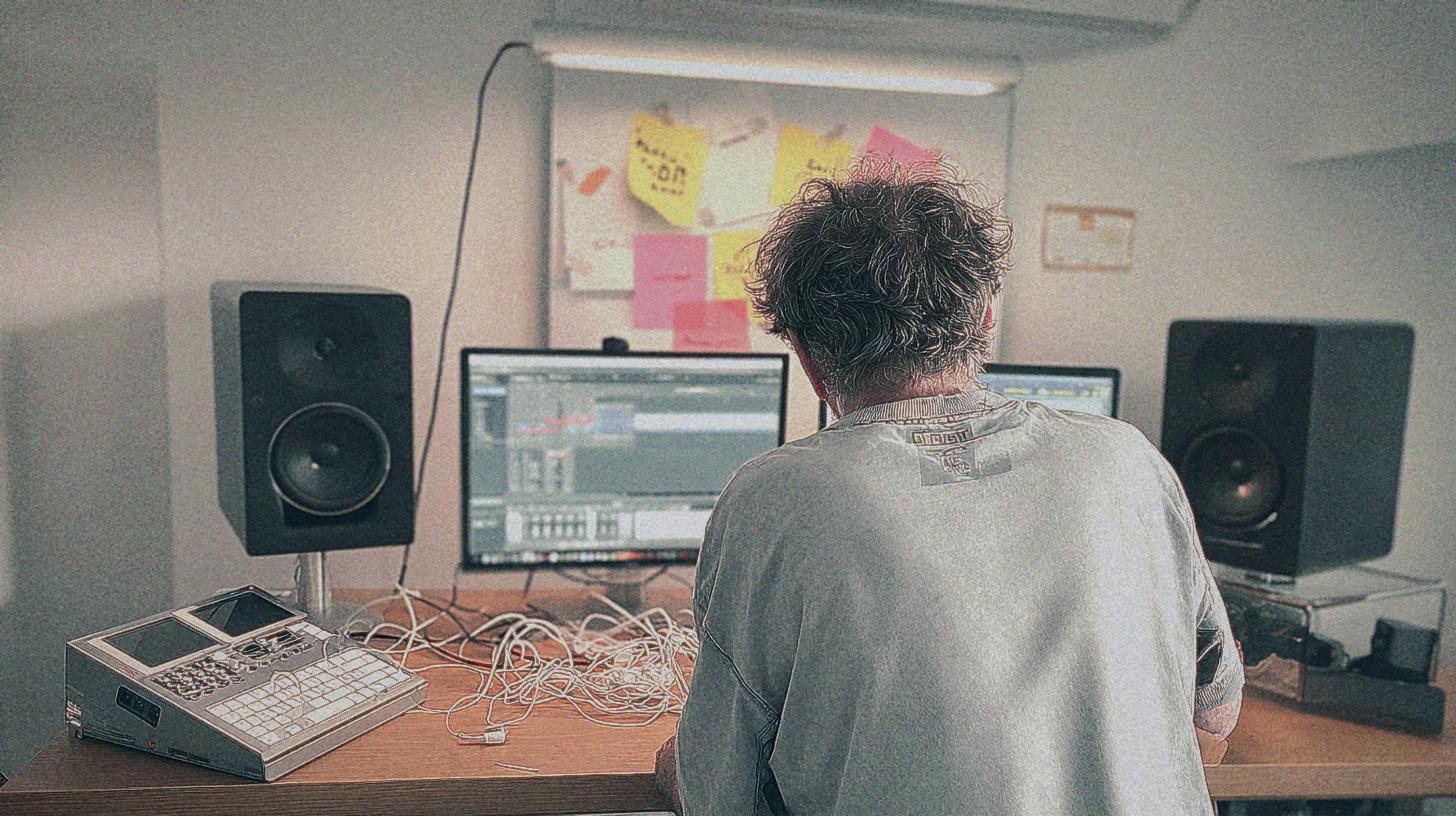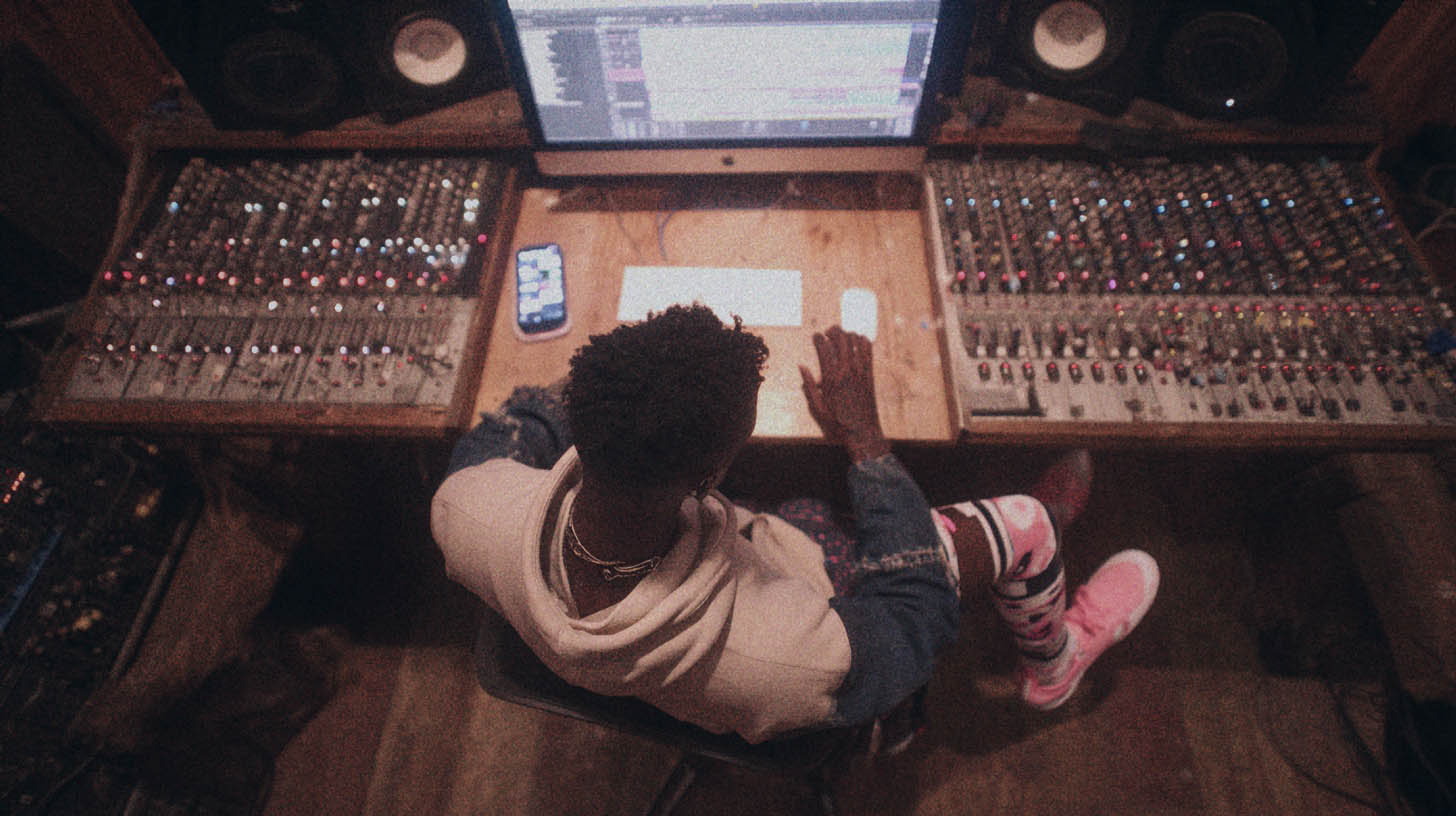
Metal Vocoder FX: From Robot Growls to Crushing Synth Layers
Nail The Mix Staff
Vocoders. For a lot of metal producers, the word probably conjures up images of cheesy 80s robot voices or maybe something Daft Punk would rock. And yeah, they can do that. But if that’s ALL you think vocoders are good for, especially in metal, you’re missing out on a ton of creative firepower. Used right, a vocoder can be a secret weapon for adding unique textures, demonic harmonies, rhythmic synth parts, and generally gnarly sounds to your heavy tracks.
Forget just "Mr. Roboto"; let's dive into how you can twist vocoders into tools of sonic destruction for your metal mixes.
So, What Exactly IS a Vocoder Anyway?
Alright, quick tech rundown for those who might be a bit fuzzy on the details. A vocoder works by analyzing one sound (the Modulator) and imposing its timbral characteristics onto another sound (the Carrier).
- Modulator: This is typically a voice, but as we'll see, it can be anything with a dynamic spectral shape – drums, guitars, even white noise. It’s the "performance" or "articulation" part of the equation.
- Carrier: This is usually a synth signal rich in harmonics, like a saw wave, pulse wave, or a complex wavetable. It’s the "tone source" that gets shaped by the modulator.
The vocoder uses a bank of filters to analyze the frequency content of the modulator. It then applies those filter changes to the carrier signal. So, if your modulator is a vocal saying "aaah," the vocoder makes the carrier synth "sing" that "aaah" sound by shaping its frequencies.
Classic hardware units like the Roland VP-330 or Korg VC-10 are legendary, but these days, you've got a killer selection of plugins like iZotope VocalSynth 2, Arturia Vocoder V, the stock vocoders in Ableton Live or Logic Pro (EVOC 20, what up!), or the super-deep MeldaProduction MVocoder.
The "Robot Voice" – Can It Even Work in Metal?
Let's get the obvious out of the way. Yes, vocoders do the robot voice thing. Think Cynic in their more spacey moments, or the occasional intro/interlude in an industrial metal track. While it might not be your go-to for the main vocal, it can have its place.
How to Nail That Classic Robot Vibe (If You Dare)
- Modulator: Your vocal track. Speak or sing clearly. Sibilance ("s" sounds) can be tricky, so sometimes a de-esser before the vocoder helps.
- Carrier: A harmonically rich synth sound. A classic saw wave from something like Xfer Records Serum, Native Instruments Massive, or Arturia Pigments is a great starting point. Try a square wave for a hollower sound.
- Plugin Settings:
- Bands: More bands (e.g., 16 or 20) generally mean more intelligibility. Fewer bands (e.g., 8-10) can sound more diffused and old-school.
- Formant Shift: Messing with this can change the perceived "gender" or character of the voice. Shift it up for a more "chipmunk" vibe, down for a deeper, more monstrous tone.
- Attack/Release: Keep these relatively fast to match the vocal transients for clear articulation.
You could use this for a one-off effect, a hidden layer, or a creepy spoken word part in a breakdown. Don't overdo it unless you're specifically going for that retro-futuristic sound.
Beyond The Robot: Twisted Vocoder Mayhem for Metal
Demonic Harmonies & Layering Growls
- Modulator: Your main death metal growl, black metal shriek, or even a clean vocal you want to mangle.
- Carrier: This is key. Try:
- A heavily detuned saw wave or multiple detuned saws from a synth like Vital.
- A noisy, distorted synth patch.
- Even a sustained, heavily distorted guitar EBow note or feedback.
- The Goal: To imprint the articulation of the vocal onto a synthetic, aggressive tone, creating layers that sound inhuman.
- Plugin Tips (e.g., iZotope VocalSynth 2):
- VocalSynth 2's Biovox or Polyvox modules are killer for this. Biovox can create some truly monstrous textures. Polyvox can generate synthetic harmonies that track the modulator.
- Blend: Start subtle with the vocoded layer mixed underneath the main vocal, then bring it up to taste. Even a quiet layer can add serious menace.
- Number of Bands: Fewer bands might make it sound more like a monstrous roar than a clear harmony. Experiment!
- Pitch Shifting/Harmonies: Some vocoders let you force the carrier to specific musical notes or intervals relative to the modulator. This can create some truly unsettling pitched growls.
Rhythmic Synth Textures from Your Drum Bus
- Modulator: Your drum bus, or even just the snare or kick track.
- Carrier: A sustained synth pad (something bright or dark and gritty), a white noise generator, or even a long, distorted guitar chord.
- The Effect: The synth carrier will take on the rhythmic pattern of your drums, essentially turning your drum hits into synth stabs or pulses. This is gold for industrial metal, cyber metal, or just adding an unexpected electronic element.
- Plugin Tips (e.g., Ableton Live's Vocoder):
- Ableton's Vocoder is fantastic for this. Use the "External" carrier mode and route your synth to its sidechain input. Or try the "Noise" carrier for a harsher, more percussive effect.
- Release Time: Adjust the vocoder's release to control how long the synth pulse rings out after each drum hit. Short for tight stabs, longer for more washed-out rhythmic pads.
- Filter Bank: Play with the levels of the different frequency bands in the vocoder to shape the tone of the rhythmic synth. You can make it more subby, more clicky, or more sizzly.
Guitar-Modulated Synths: Riffs Reimagined
- Modulator: Your rhythm guitar track – especially a tight, chunky, distorted one.
- Carrier: A bright, cutting synth sound. Think FM synths (like Native Instruments FM8), wavetable synths with evolving timbres, or even a simple saw wave processed with some interesting effects.
- The Effect: The synth will "speak" or "articulate" with the rhythm and envelope of your guitar riff. This can create some insane hybrid guitar/synth tones, perfect for modern metalcore, djent, or experimental metal. Imagine a synth lead that perfectly follows every chug and squeal of your 8-string.
- Plugin Tips:
- While not a traditional vocoder, Polyverse Manipulator can get you into similar territory with its pitch and formant shifting capabilities driven by an audio input.
- Some vocoders with flexible routing, like MeldaProduction MVocoder, can excel here if you feed the guitar into the modulator input.
- Try a very short release time on the vocoder to make the synth track the guitar tightly.
Crafting Drones and Unholy Atmospheres
- Modulator: Something with a changing timbre over time. A long, sustained vocal scream that morphs, a reversed cymbal swell, heavily processed field recordings, or even the tail end of a massive distorted guitar chord fading out.
- Carrier: A simple sine wave (to purely take on the modulator's character), a complex synth pad, or even just white noise.
- The Effect: The sustained carrier will take on the spectral movement of the modulator, creating drones that shift, writhe, and evolve. Perfect for intros, outros, ambient breakdowns, or just adding a layer of unease under your tracks.
- Settings:
- Long Release Times: This is crucial for drone creation, allowing the sound to sustain and evolve.
- High Wet Mix: You mostly want to hear the vocoded effect here.
- Band Smoothing/Lag: Some vocoders allow you to smooth out the filter changes, which can make the drones more fluid.
Vocoder Plugin Deep Dive: Top Picks for Metal Mayhem
iZotope VocalSynth 2
- Why it rocks for metal: It’s not just one vocoder; it’s a suite of vocal mangling tools. The Vocoder module itself is great, but then you have Biovox for creature/monster sounds, Polyvox for synthetic harmonies, Compuvox for retro speech synth effects, and Talkbox for classic guitar-driven vocal fun. The ability to blend these modules is insane.
- Killer Feature: The "MIDI Mode" in the Vocoder module lets you play the harmonies of the vocoded signal with your MIDI keyboard, giving you precise control over the pitches. Imagine your growl triggering a perfectly tuned demonic chord.
- Pro Tip: Automate the X/Y pads within each module for evolving, morphing textures.
Arturia Vocoder V
- Why it rocks for metal: It has a rich, thick sound that can add serious weight. The built-in analog-style synth carrier and sampler offer a lot of tonal possibilities right out of the box.
- Killer Feature: The "Patch Bay" allows for some seriously deep customization and routing, letting you sculpt the interaction between bands in unique ways. Great for that vintage sci-fi or industrial vibe.
- Pro Tip: Use the built-in ensemble effect to add lush stereo width to your vocoded sounds.
Your DAW's Stock Vocoder (Ableton Live, Logic Pro X, etc.)
- Ableton Live's Vocoder: Super versatile. Its "External" audio input for the carrier is easy to use, and the "Noise" carrier option is great for percussive or whispered effects. The different filter bank modes (Retro, Speech, etc.) offer varied flavors.
- Logic Pro's EVOC 20: A classic. It has a clear sidechain input for your carrier, and the Formant Filter can really shape the character. The "Analysis Display" gives you good visual feedback.
- Why they rock: They’re integrated, CPU-efficient (usually), and can be surprisingly powerful once you dig in. Perfect for quick experimentation or when you need a straightforward vocoding job.
Other Awesome Options
- MeldaProduction MVocoder: If you want to go deep, this is it. Insanely customizable, tons of bands, morphing, etc. Steeper learning curve, but the sonic possibilities are vast.
- Waves Morphoder: A long-standing plugin, simple to use, gets good results quickly. Good for classic vocoder sounds.
- Xfer Records Serum FX: Yep, the FX version of Serum! You can load an audio file into the "Noise Osc" and then use Serum's filter types (including some that can act like vocoder bands) modulated by an envelope follower on that audio. It’s a bit more DIY but very powerful if you own Serum.
Pro Tips for Getting Killer Vocoder Sounds in Your Metal Mix
The Carrier Signal is CRUCIAL
- Harmonic Richness: Saw waves, square waves, pulse waves, complex wavetables from synths like Serum or Arturia Pigments, or even heavily distorted guitars work best because they give the vocoder’s filter bank plenty of frequencies to work with. A pure sine wave carrier will sound very thin and whistle-y unless that's what you're after.
- Noise as a Carrier: White noise or pink noise can be a great carrier for whispery, sibilant, or ghostly effects, especially when modulated by vocals.
- Pre-EQ the Carrier: Shape your carrier before it hits the vocoder. Want a darker vocoded sound? Low-pass the carrier. Want it brighter? High-pass or boost highs. (If you need to brush up on EQ, our [EQ hub page: https://www.nailthemix.com/carve-your-core-eq-strategies-for-mixing-modern-metal] has tons of tips.)
Optimize Your Modulator Signal
- Clarity for Vocals: For intelligible vocoded speech or singing, make sure the original vocal is clear and present.
- De-Ess Sibilance: "S" and "T" sounds can become overly harsh or lispy through a vocoder. Try a de-esser on the modulator vocal before it hits the vocoder plugin.
- Gate Noise: If your modulator has background noise, gate it out. You don’t want the vocoder trying to articulate hiss.
EQ is Your Friend (After the Vocoder)
Vocoded signals can sometimes be a bit wild – muddy in the lows, harsh in the highs, or with weird resonant peaks.
- Sculpt It: Don't be afraid to EQ the vocoder's output aggressively to make it fit your mix. High-pass filters are almost always essential to clean up low-end rumble. You might need to notch out specific annoying frequencies with a narrow Q.
- Context is King: EQ the vocoded sound in the context of the full mix, not just in solo. What sounds cool on its own might clash horribly with guitars or cymbals. (Again, check out the [EQ hub page: https://www.nailthemix.com/carve-your-core-eq-strategies-for-mixing-modern-metal] for more.)

100+ Insanely Detailed Mixing Tutorials
We leave absolutely nothing out, showing you every single step
Compress for Control and Impact
Compression can be useful both before and after the vocoder.
- Compressing the Modulator: This can provide a more even signal to the vocoder, leading to more consistent articulation, especially with dynamic vocals or drums.
- Compressing the Output: This can help the vocoded sound sit better in a dense metal mix, add punch, or smooth out its dynamics.
- For a deep dive into taming dynamics, our [Compression hub page: https://www.nailthemix.com/metal-compression-secrets-beyond-just-making-it-loud] is packed with info.
Add Stereo Width and Post-FX
Most vocoders output a mono signal unless their carrier is stereo or they have built-in stereo effects.
- Spread it Out: Many vocoder plugins have built-in stereo spreaders or unison modes. Use them!
- Post-Effects: Chorus, phaser, delay, and reverb after the vocoder can take the sound to another dimension. A ping-pong delay on a rhythmic vocoded part or a massive dark reverb on a vocoded demonic voice can sound immense.
Bringing It All Together
Vocoders are way more than just a one-trick pony for robot voices. For metal producers, they offer a massive palette for sonic innovation – from adding subtle, creepy layers to vocals, to creating driving rhythmic synth parts from your drum performances, to mangling guitars into entirely new instruments. The key is experimentation: try different carriers, different modulators, and push those plugin parameters to their limits.
These techniques are just scratching the surface, of course. Imagine seeing how pro mixers actually integrate these kinds of creative effects into a full-blown metal production, dialing in every parameter, and making every element punch through. At Nail The Mix, you get exactly that – a front-row seat watching world-class producers mix real songs from massive bands, explaining every single decision they make. If you’re ready to go beyond presets and truly unlock your sound mixing modern metal beyond presets, seeing these concepts applied in real-world mixing sessions is an absolute game-changer.
So go fire up your DAW, grab a vocoder plugin, and start making some noise. You might just find your new favorite way to make your metal tracks sound even more unique and terrifying.
Get a new set of multi-tracks every month from a world-class artist, a livestream with the producer who mixed it, 100+ tutorials, our exclusive plugins and more
Get Started for $1



